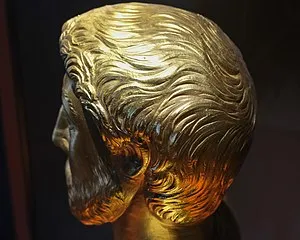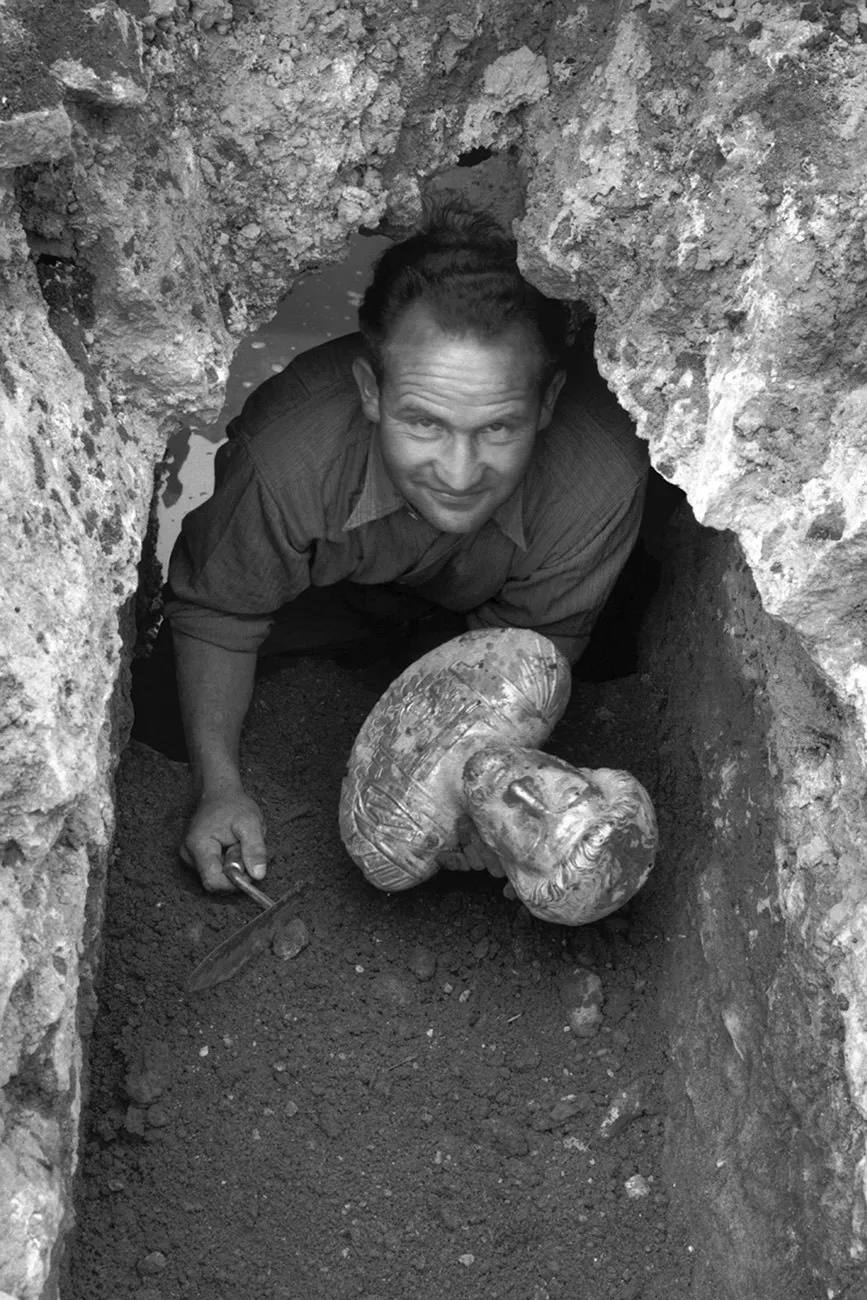The gilded bust of Emperor Marcus Aurelius from Avenches in western Switzerland is to go on display at the Getty Museum.
The gilded bust of Emperor Marcus Aurelius from Avenches in western Switzerland will go on display at the Getty. It is the largest known bust of an emperor made of a precious metal and one of the few gold busts that was not melted down. This bust of Marcus Aurelius is so rare and so valuable that it is usually kept in a bank vault. Instead, the Roman Museum in Avenches keeps a copy on display. It has only been displayed a dozen times and never before in the United States.

The bust was discovered in 1939 during an excavation of a temple at Avenches’ ancient predecessor, Aventicum. Aventicum was the capital of the Helvetii and was incorporated into the Roman Empire under Augustus in 15 BC. Vespasian granted it colonia status in AD 71/2, prompting a major urban redevelopment of the city. A large temple complex modelled on Vespasian’s Templum Pacis in Rome and dedicated to the local Helvetii gods and the cult of the emperor was built during this time.
Found in a sewer junction beneath the main courtyard of the temple complex, the gilded bust measures 13 inches tall and weighs 3.5 pounds—the equivalent of 220 aurei of gold from the time of Marcus Aurelius (r. AD 161–180). It is crafted from a single sheet of cold-worked gold using the repousse technique. The goldsmith hammered the back of the sheet to create the emperor’s three-dimensional features: a thick head of hair, a manicured beard, and intense eyes. Fine details were engraved into the outer surface after the repousse was complete. He wears a lorica plumata , a breastplate decorated with rows of feathers, around a central gorgoneion.

Only about 15 imperial portraits made of precious metals, and only six of them made of gold, survived the challenge of being destroyed in antiquity because of their weight. Hollow, portable, and requiring a stand to stand, this type of portrait was created to be an imago, an effigy of the emperor intended to embody his sacred authority in processions and temples dedicated to imperial worship. Marcus Aurelius wrote in a letter of AD 162/3 to the curator of the temple at Ephesus that portraits of past emperors should never be altered to resemble other emperors (a common practice with marble portraits) or melted down.

“There must be no reworking of the material to make it resemble us. For if in other respects we do not claim honours for ourselves, much less should we allow those of others to be transferred to us. Many of the statues which are in a good state of preservation should be preserved under their original names, but with regard to those which are too deteriorated to be identified, perhaps their titles may be recovered from the inscriptions on their bases or from such records as may exist in the possession of the Council, so that our progenitors may rather receive a renewal of their honour than its extinction by the fusion of their images.”

The bust will be on display at the Getty Villa in Los Angeles from May 31 this year until January 29, 2024.






